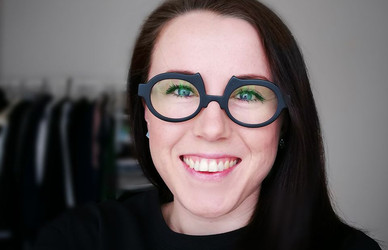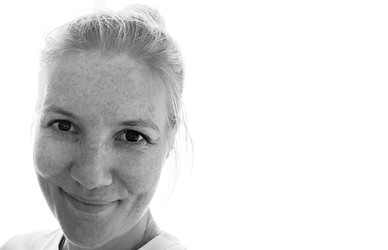They turn the doctor-patient relationship upside down
Allowing patients a greater say in their own treatment, and perhaps even letting them decide what type of treatment they prefer, is a practice that is being adopted in several areas within the Danish healthcare system. But in order to prepare the patient as well as possible for making the – sometimes difficult – decisions, tools are needed. This is the kind of issue that Kathrina Dankl, Assistant Professor in Welfare Design, has been researching.
"In order to create an effective decision-making tool, all parties must be committed and take ownership of the project, because all of a sudden there are two voices with equal standing present during the consultation: That of the patient and that of the clinical expert. It's not about turning people into experts – it's about making the patients aware that they have a choice and that they can contribute to making the right decision. Our project is really about radical innovation, where the doctor-patient relationship becomes twisted," she says.
Kathrina Dankl teaches students in Welfare Design at Design School Kolding while also researching Shared Decision Making in the healthcare system.
Emotions and reason
The first step was actually a six months’ programme in 2015 in which three designers developed a practical decision-making tool to support breast cancer patients in making decisions about post-operative care, a treatment that can have numerous side effects, but which most patients were reluctant to refuse. There was therefore often a gap between the patient's emotions and the healthcare professionals’ rational recommendations that the support tool needed to bridge. Communication Designer, Denise Dyrvig Jensen, was involved in the project.
"When we started two years ago, we participated in 36 consultations where we observed the dialogue between the physician and the patient. Generally, an incredible amount of information was presented which the patient had to consider while facing an already difficult situation. So we designed a support tool in the form of a series of graphical information sheets and check boxes. It was important to us that it was a tool that all parties would use."
In the new phase of the project, which was launched in the autumn of 2015, the research focuses more on co-decision. After a broad literature study in which theory is explored for best-practice examples the involvement of healthcare professionals has increased with e.g. monthly workshops where the staff gets an insight into design methods and has the opportunity to exchange experiences about working with co-decision, Assistant Professor, Kathrina Dankl explains.
Next step
Involvement and ownership are such important elements in the project's overall success, and therefore a manual on the use of the decision support tools is on the to-do list for this fall. Right now the team is developing a more generic product for use throughout the hospital, so that the tool not only caters to breast cancer patients, but also to patients with other diagnoses. Kathrina Dankl and Denise Dyrvig Jensen’s starting point for this project are the international guidelines from IPDAS (International Patient Decision Aid Standards), based on experience with the use of various decision support tools.
"Our ambition is clearly to provide a tool and a model for involvement and implementation of a tool that is beneficial, and which can be used in several different departments at Lillebaelt Hospital," says Denise Dyrvig Jensen.
Fact
The project, which is a collaborative effort with the Center for Shared Decision Making, consists of a practical development project of which Design School Kolding’s LAB for Social Design is in charge. The research work contributes with knowledge and publications.
In 2017, Design School Kolding and the international Cumulus Association will be hosting a large, international conference with the title REDO. The purpose of the conference is to zoom in on design’s role in creating a sustainable future and achieve impact on political decision-making processes. As a prelude to the conference, we will be bringing a series of articles to show Design School Kolding’s research and how we work to bridge the gap between design thinking and design practice.





